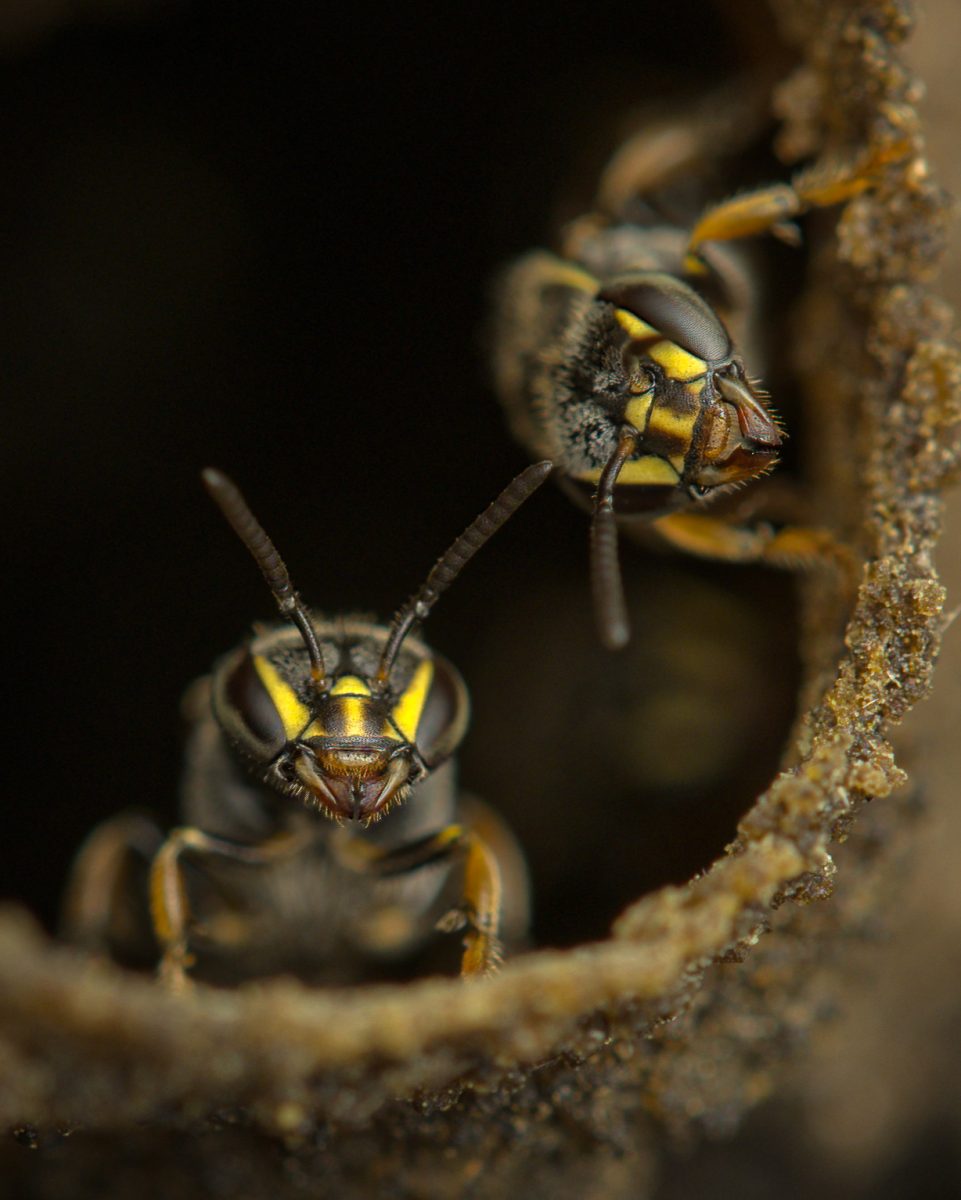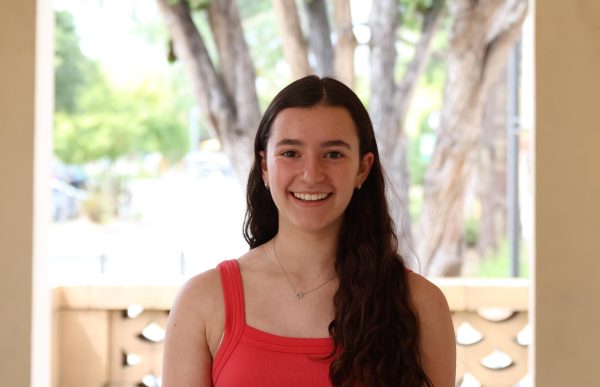As he examined the unknown species from Palo Alto, Martin Hauser, the senior environmental scientists supervisor of California, sat in shock at his rare discovery. The tiny insect was indeed a “Plebeia emerina,” and Hauser wondered how this Brazilian stingless bee could have settled and thrived in California. As he drove to Palo Alto to see the colony for himself, Hauser could only believe that this must have been a prank.
For 75 years, a population of Brazilian stingless bees, “Plebeia emerina,” has secretly thrived in Palo Alto, creating a healthy colony long-after the species was presumed extinct in the United States. Following the large discovery in 2021, entomologists made efforts to support the bees’ survival in Palo Alto and continue to educate the community on meliponiculture — the management of stingless bees.
In the 1940s, Brazilian entomologist Paulo Nogueira-Neto released colonies of “Plebeia emerina” around the United States in an attempt to prove fellow entomologists in Brazil that individual bee colonies could survive in non-native environments.
“In 1948, I sent 10 colonies of Meliponini to the United States Department of Agriculture, and 20 others in 1950,” Nogueira-Neto wrote in his article published in December 2002. “They were forwarded to Baton Rouge (Louisiana), Tucson (Arizona), Davis and Palo Alto (California), Logan (Utah) and Beltsville (Maryland).”
Of these populations, he concluded every colony died within a year, except those in Baton Rouge and Palo Alto. According to his observations, the Baton Rouge population lasted two years, while the Palo Alto population, under the supervision of Stanford Professor George Schafer, survived eight years.
When all of the colonies had died, the study concluded and the stingless bee was assumed extinct in the United States.
In 2013, though, a local exterminator received a call from a Palo Alto family about a swarm of bees in their backyard. After careful examination by Hauser, he confirmed that the insects were “Plebeia emerina.”
“Six years later in 2019 the tree died in which the bees were in, but the home owners kept the tree still in the garden,” Hauser said. “But in 2020 in a storm, the tree was pushed over by the storm, and they had to cut it down, unfortunately, with the colony.”
As this colony waned, former Gamble Gardens Director Richard Hayden identified another colony of “Plebeia emerina” in the trees at Gamble Gardens in 2018.
“We came across the bees because I noticed in one of our very tall, very old, probably 100-year-old palm trees by the house at Gamble garden there was some insect activity very high up that was unusual,” Hayden said. “It was coming out of the trunk, like there was a nest in the trunk, and I was curious.”
After sending a sample for identification, Hauser again confirmed that they were “Plebeia emerina,” and interestingly Gamble Gardens is only a few blocks away from the house of George Schafer, the Stanford professor in the ‘60s who maintained the original colony.
Palo Alto entomologists officially confirmed the existence of this species in Palo Alto in spring 2021 when 4-year-old Annika Arnout found a small insect in her Palo Alto backyard. Her caregiver, entomologist and biologist Targe Lindsay, confirmed the two colonies Arnout found were in fact “Plebia emerina.”
The rare discovery not only confirmed Nogueira-Neto’s original thesis, but it also revealed the stingless bee had exclusively survived in Palo Alto. More colonies were found at Gamble Gardens afterwards.
Jean-Philippe Marelli, a beekeeper, studied the stingless bees when he was living in Brazil during the pandemic, and continued studying and helping them when he returned to Davis, California.
“They’re really exceptional because they’re the only (stingless) bees that occur in the northern hemisphere, so it’s really a very unique opportunity,” Marelli said.
Marelli connected with experts in Palo Alto and began efforts to sustain the bees. After attempting many strategies, he said he eventually found a way to help the swarm settle permanently in a hive, allowing him to transfer the bees to better locations for care.
“We’re hoping that by next season, by the spring, we’ll have some success on that, but it’s been fun working with those bees,” Marelli said.
According to Marelli, the bees are particularly special because they are uniquely an introduced species to the United States, and yet they have still thrived only in California.
“They’re really not either invasive or noxious to the environment, because all they do is help pollination,” Marelli said. “They’re not expanding the range, and the reason we think they’re not is because the conditions of Palo Alto are really unique in terms of the amount of flowers that are present all year round.”
Retired journalist and photographer Robin Agarwal began photographing the bees locally when she couldn’t travel during the pandemic. Agarwal said while they are nonnative species, meaning they were introduced to California by humans, they are not invasive species as they don’t harm our environment.
“They didn’t choose to come here, but nonetheless survived,” Agarwal said. “Impressive. I’m also fascinated by the fact that in the 70 years they’ve been here, they have never been spotted outside the Palo Alto city limits.”
Marelli said the climate, similar to that of southern Brazil, with colder winters and medium summers, make Palo Alto an ideal location for the bees to thrive. Hauser also said many other aspects of Palo Alto make it perfect for these bees, especially its location near the ocean.
“They need higher humidity, and they need nice gardens, so they would (generally) never survive in the natural environment in California, and that’s very likely the reason why they never spread and why nobody ever found them,” Hauser said.
Marelli also said the fact the bees are stingless makes them ideal for educational purposes since kids can learn about them without the hazard of getting stung. They do produce less honey than normal bees though. Marelli said these bees generally come in small populations of only 5,000 to 10,000, yet they are crucial in many environments, especially in tropical areas.
“I think what is fascinating to me is that they are really pretty essential for the conservation of the tropical rainforest, so without stingless bees, we could not have the Amazon,” Marelli said.
Agarwal said she hopes to continue working with these special species and help them thrive in Palo Alto.
Agarwal said, “I just want them to live their lives, looking cute, pollinating our local gardens and bringing joy to entomologists who study introduced species.”
If you think you see a “Plebeia emerina,” please take a photo if possible, and add it as an iNaturalist.org observation, and/or contact Robin Agarwal at robingwenagarwal@gmail.com for species confirmation so that the new location can be added to our project. And plant more pollinating plants in your gardens!



